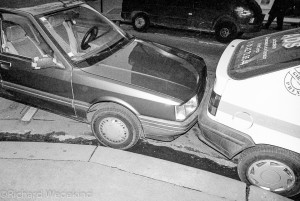Category Archives: Observations
New Zealand Government Eats its Greens
When John Key was elected Prime Minister of a minority National government in 2008, one of his first acts was to overturn legislation of the defeated Labour government mandating a phase-out of incandescent light bulbs.
National was not to be associated with ‘nanny state’ proscription which ran counter to a Libertarian agenda that included lots of fossil fuel extraction (lignite, coal, oil & gas) and catching up with Australia. We now export graduates there in such numbers that the proportion of the population to have graduated from university has declined by nearly 5% since 2000 cf. the OECD average rise of 4% – Economist).
But over the last few months the tables have turned and New Zealand is making huge green inroads – even while the government has walked out of Kyoto and watered down the already ineffective ETS.
So what has brought about this turn around?
- Last December the Brazilian oil giant Petrobras relinquished it’s expansive Exploration Licences off the east coast of North Island after completing a controversial seismic survey in 2011. While the National cabinet is full of blue sky miners, the reality is that New Zealand has proven a difficult nut to crack for explorers (even in Taranaki) and Petrobras obviously didn’t see anything in the seismic results that suggested easy money. Hopefully this result has cooled the ardour of some cabinet members for the title of Saudi Arabia of the South.
- National imposed a carbon tax – due to take effect in July 2013 with a 3 cents a litre petrol tax hike on this and each of the following two years. Of course they didn’t call it that because a tax on carbon would stifle economic activity. This is a strategy to lift government income; raising a projected $300 million to help out the bottom line in a stagnant economy with high unemployment, rising emigration and poor social outcomes. For an economy that is reliant on the slow-to-build stimulus provided by the Christchurch earthquake of 2011, there are few options available other than clawing back tax cuts offered up early in their tenure. Whatever the stated goals of the tax increase, it will effect the overall economy and in all likelihood lead to a reduction in the use of petroleum – one of the goals in the introduction of a carbon tax.
- Although the historical high value of the New Zealand dollar has cushioned us from the effects of rising oil prices, this has been cited in combination with low coal prices as the reason for the economic strife of State Owned Enterprise Solid Energy. The company has ballooning debts of over $389 million and has already, as part of the cost cutting, shelved plans for large-scale lignite mining in Southland. Large tracts of land bought up to facilitate access to the bounty below, are now on the market and are likely to become dairy farms. While New Zealand prides itself on the very high proportion of sustainable energy (hydro and geothermal), Solid Energy’s plans to use low grade lignite in large-scale, energy intensive, fertilizer and bio-diesel applications were going to significantly undercut this standing. These proposals were strongly criticised for both their carbon intensity and the use of an outdated dirty technology.
There can be no question that these events were significant reversals in the government agenda and are likely to impinge on the well-being of all New Zealanders through higher costs and continued reductions in services. The irony is that these are the sort of consequences that it was argued, would prevent us from taking steps to reduce greenhouse gas emissions until everyone else in the world has adopted them. It looks like New Zealand is taking a lead (albeit accidental) – something the Government argued it would never do.
Let’s get real about cats and dogs
Regardless of where you sit in the cat spectrum, you will readily admit that cats catch and kill stuff. However, the extent to which they do this will vary from ‘they mostly catch rats and mice and are therefore environmentally benign/beneficial’, to ‘they are responsible for an avian genocide’. A recent US study mounted cameras on cats and recorded their activities. While only 30% of roaming cats kill prey (an average of two per week), those that do only bring home a quarter of what they catch. So for every mouse (or bird) that Tiddles shows you, there are likely to be three more corpses left out in the garden.
Gareth Mogan provides some frightening statistics on cat predation of native fauna, so what should be our approach be to this reality? At the moment there are no restrictions on the number of cats that can be kept, there is no registration requirement and cats are free to wander as and where they please.
Contrast this with our closest neighbour; where our ‘cultures’ is so interchangeable that nearly 60,000 Kiwis a year go there with the ease of moving to a neighbouring town – though you might be surprised if you want to take your moggy with you. In Victoria legislation requires: registration, permanent identification, restrictions on numbers kept, mandatory de-sexing and secure confinement to the owner’s premises.
“Did you know…
Your neighbours are entitled to enjoy their garden without your cat or dog roaming onto their property killing birds, digging or leaving excrement in their garden. If your neighbour asks you to stop your cat or dog from coming onto their property, you must do so. If your animal strays onto their land without permission more than once, it can be seized and you may be fined or prosecuted.”
Melbourne also encourages you to keep your cat inside at night for the sake of you, your cat and anything that they might catch.
Clearly we are a long way from this level of prescription, but the question is, if the Australians accept regulations to help control an equivalent impact on their native fauna, why can’t we?
While Gareth Morgan is being deliberately provocative, he is on the right track. As a start sign his on-line petition calling for registration and chipping of all cats.
Paris Parking

French kiss: ultra tight parking is a feature on Paris streets. Note that the dust on the bonnet of the car has been rubbed off by pedestrians ‘going over the top’.
While I was working on my Ph.D. at the University of Tasmania a Parisian post-Doc and his exotic wife came to the Geology Department to study with the renowned Prof. David Green.
My enduring memory of their short sojourn down under was the wife commenting on a parking mishap she had in Hobart when she tried to ‘bump’ the car in front to make space and it didn’t move. She explained that in Paris you don’t park with your handbrake on so that parking space is maximised.
Sure enough when we eventually visited Paris, we were most impressed with this Gallic parking strategy which included not only the impossibly tight parking one sees, but the creative use of pedestrian crossings and street corners as places where cars can temporarily be abandoned. It was also amusing to watch the reactions of pedestrians to these obstructions; if the car was in the way, just hop over the bonnet and continue on your way. This was obviously routine everyday behaviour without rancour or malice.
In the process of digitising old photographs I came across a series of images of Parisian parking which are now on my web site.


